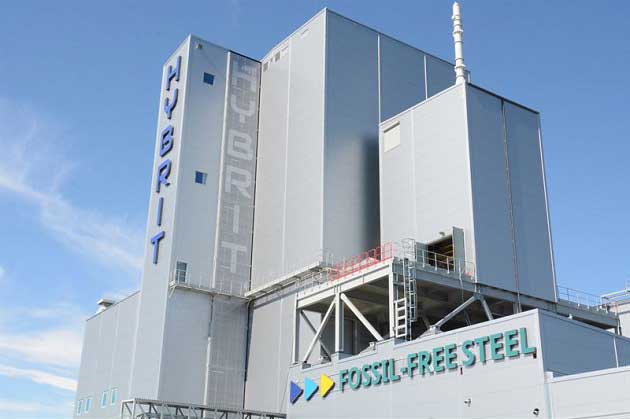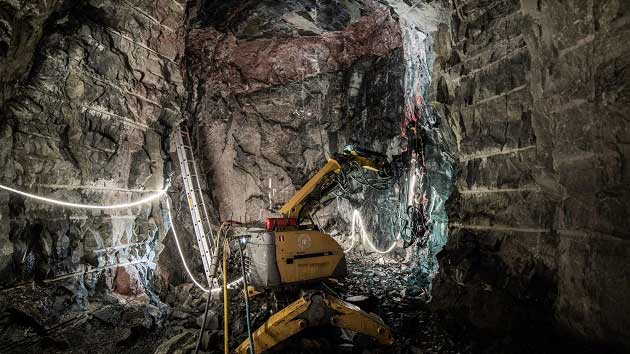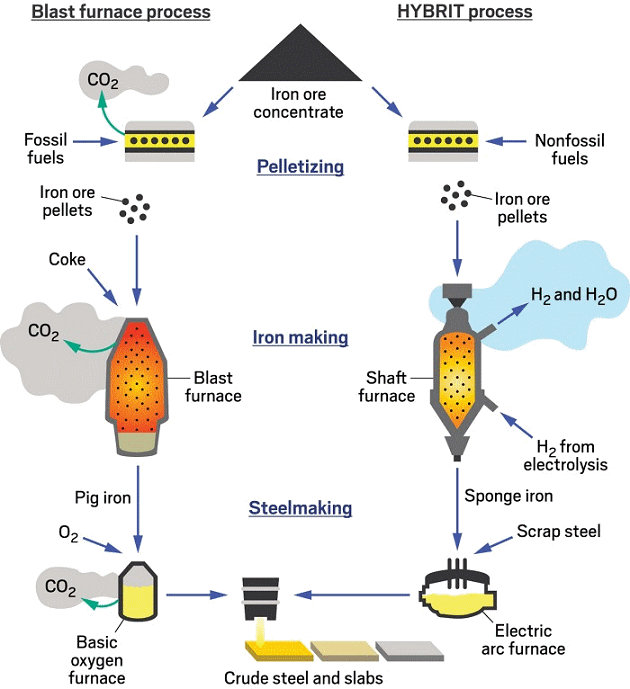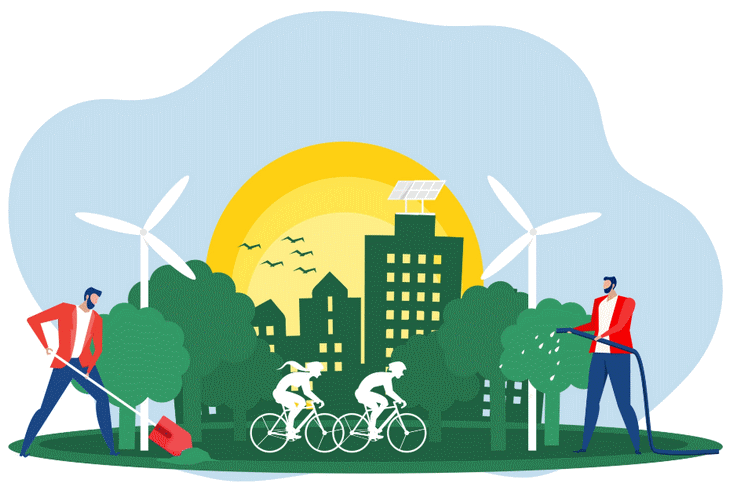February 2022
HYBRIT: Unique hydrogen storage facility in Lulea Sweden
Now that the steel cladding is in place, the HYBRIT storage facility for fossil-free hydrogen in a rock cave is halfway there.
 Image.. www.ssab.com
Image.. www.ssab.com
HYBRIT - the story so far
The HYBRIT initiative was launched in 2016 by the three owners; SSAB, LKAB and Vattenfall. The hydrogen storage facility will play a very important role in the overall value chain for fossil-free iron and steel production. Production can take place without a storage facility, but storage provides the ability to vary electricity demand and ensure stable production. Producing hydrogen gas when electricity is plentiful, such as when there is high wind, and using stored hydrogen gas when the electricity system is under pressure, ensures production.
The hydrogen storage facility has a stabilizing effect on the electrical system. It reduces the risk of overloading the system. We want to develop the HYBRIT technology to be in line with the future electricity system with more weather-dependent electricity generation, says Mikael Nordlander, development manager for Vattenfall's industrial partnerships.
 Image.. Patrik Öhman - group.vattenfall.com
Image.. Patrik Öhman - group.vattenfall.com
The storage facility is unique and once again the HYBRIT initiative is taking the lead in the fossil-free transition. The technology for storing gas in a lined rock cavern (LRC) is well proven and has been used in southern Sweden for about 20 years for storing natural gas. However, the technology is now taking another step forward as it's being developed for the first time with hydrogen gas on a large pilot scale.
What’s so fantastic about HYBRIT is just how many different innovative parts the initiative consists of. The hydrogen storage facility is a good example of how we're testing and using innovations to achieve the goal of a completely fossil-free value chain, the first in the world, says Martin Pei, Technical Director at SSAB.
The hydrogen atom and the hydrogen gas molecule are the smallest that exist, which brings special challenges. We want to see that the storage facility can cope with variations in pressure and can keep up when electricity generation varies, says Susanne Rostmark, research leader at LKAB.
The various parts of the plant are now mostly in place. Rock caverns and connecting tunnels have been constructed in the rock and a ventilation shaft has been drilled from the top of the rock down to the upper part of the rock cavern. At the end of 2021, the compressor that will be used to pressurise the hydrogen gas for storage was lifted into place.
Intensive work in progress
Since the start of construction, the pipelines needed to transport hydrogen gas to the storage facility have also been put in place. The hydrogen gas that will be stored is being produced in connection with the pilot plant for fossil free steel production by means of direct reduction that is already in operation in Luleå. The hydrogen can be used both in the direct reduction trials and in the storage tests.
Intensive work is under way at the moment to complete and inspect all installations, while the facility's steel lining is being welded together in the cavern, says Mikael Nordlander.
Using HYBRIT technology, SSAB, LKAB and Vattenfall can help reduce Sweden’s carbon dioxide emissions by 10 per cent and Finland’s by 7 per cent. Fossil-free hydrogen gas instead of coal and coke is crucial to the HYBRIT technology.
The owners SSAB, LKAB and Vattenfall are investing a total of around SEK 200 million in three equal parts, and the Swedish Energy Agency is contributing just over SEK 52 million to the construction of a fossil-free hydrogen storage facility.
Facts about: the Lulea hydrogen storage facility
- Construction of the hydrogen storage facility began in May 2021 and is scheduled to begin operation in the summer of 2022. Testing will then continue until 2024.
- Hydrogen storage will be tested at the storage facility using a well-known technology known as LRC (Lined Rock Cavern).
- The fossil-free hydrogen (green hydrogen) will be produced by water electrolysis using fossil-free electricity.
- It is important to build in rock of a type that retains its good properties. For example, the rock at Svartöberget consists mainly of amphibolite with elements of pegmatite and red granite.
- The storage facility is a 100-cubic-meter pilot plant that will contain hydrogen gas at a pressure of 250 bar.
- At full scale, potentially 100,000 - 120,000 cubic meters storing 100 GWh of electricity converted to hydrogen, it will be enough to power a full-size steel mill for about three to four days.
- The rock cave where the gas will be stored is about 30 meters above the ground, and the distance from the opening for the connection tunnels to the rock cave is about 100 meters.

Facts about: the HYBRIT project
- The HYBRIT initiative was launched in 2016 by the three owners; SSAB, LKAB and Vattenfall.
- With the HYBRIT initiative, SSAB, LKAB and Vattenfall aim to create a completely fossil-free value chain, from mine to finished steel, with fossil-free pellets, fossil-free electricity and hydrogen.
- The pilot plant for fossil-free sponge iron production in Lulea began operation on August 31, 2020.
- On March 24, 2021, Gallivare was chosen as the site for the planned demonstration facility for industrial-scale production. Sponge iron is used to make steel.
- In May 2021, construction began on a pilot-scale fossil-free hydrogen gas storage facility adjacent to the HYBRIT direct reduction pilot plant in Lulea.
- In August 2021, SSAB produced the world's first fossil-free steel, produced using HYBRIT technology, and delivered to customers. The pilot delivery was an important step towards a completely fossil-free value chain for iron and steel production and a milestone for the HYBRIT cooperation between SSAB, LKAB and Vattenfall.
Reference(s) ..
group.vattenfall.com
hydrogentechworld.com
